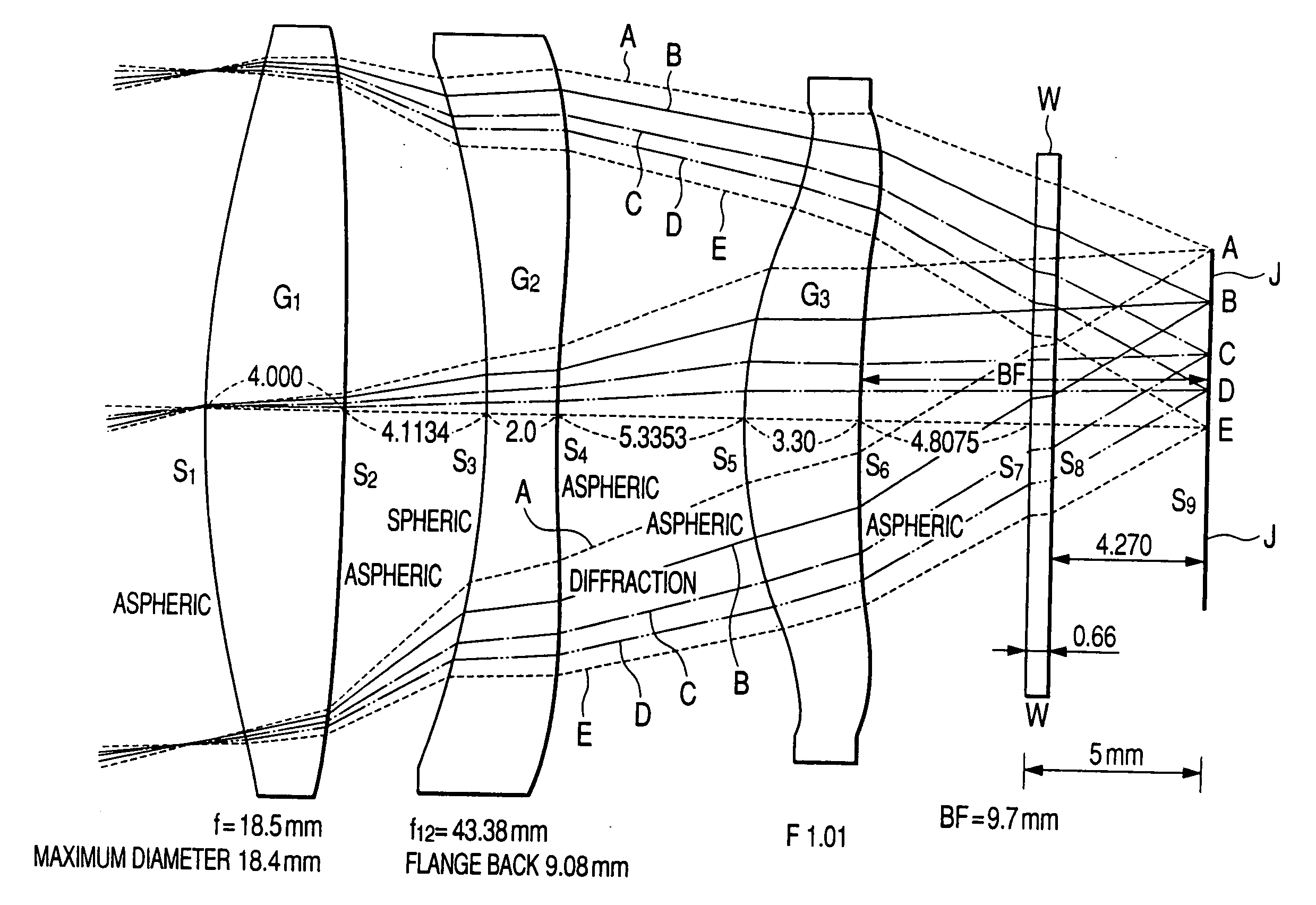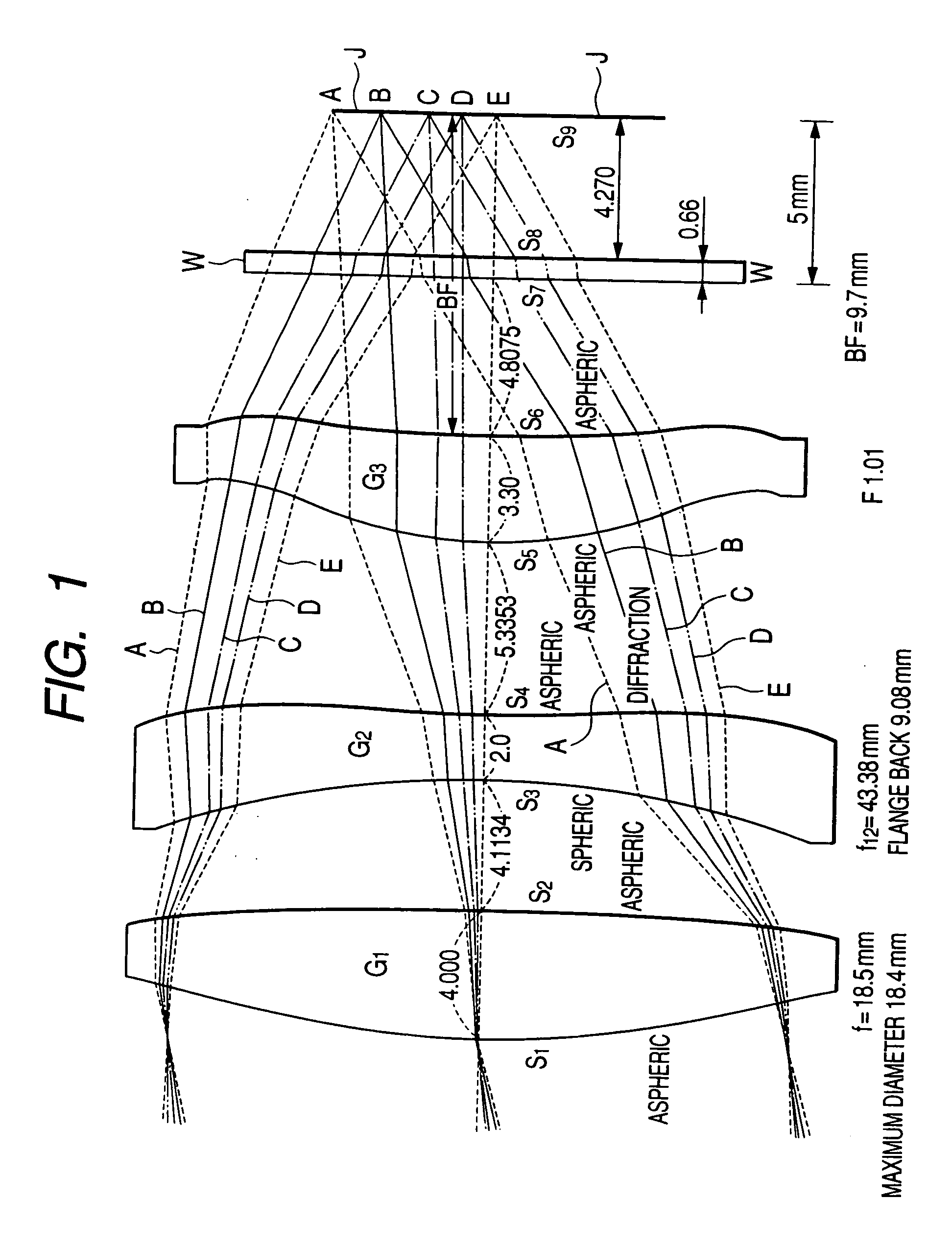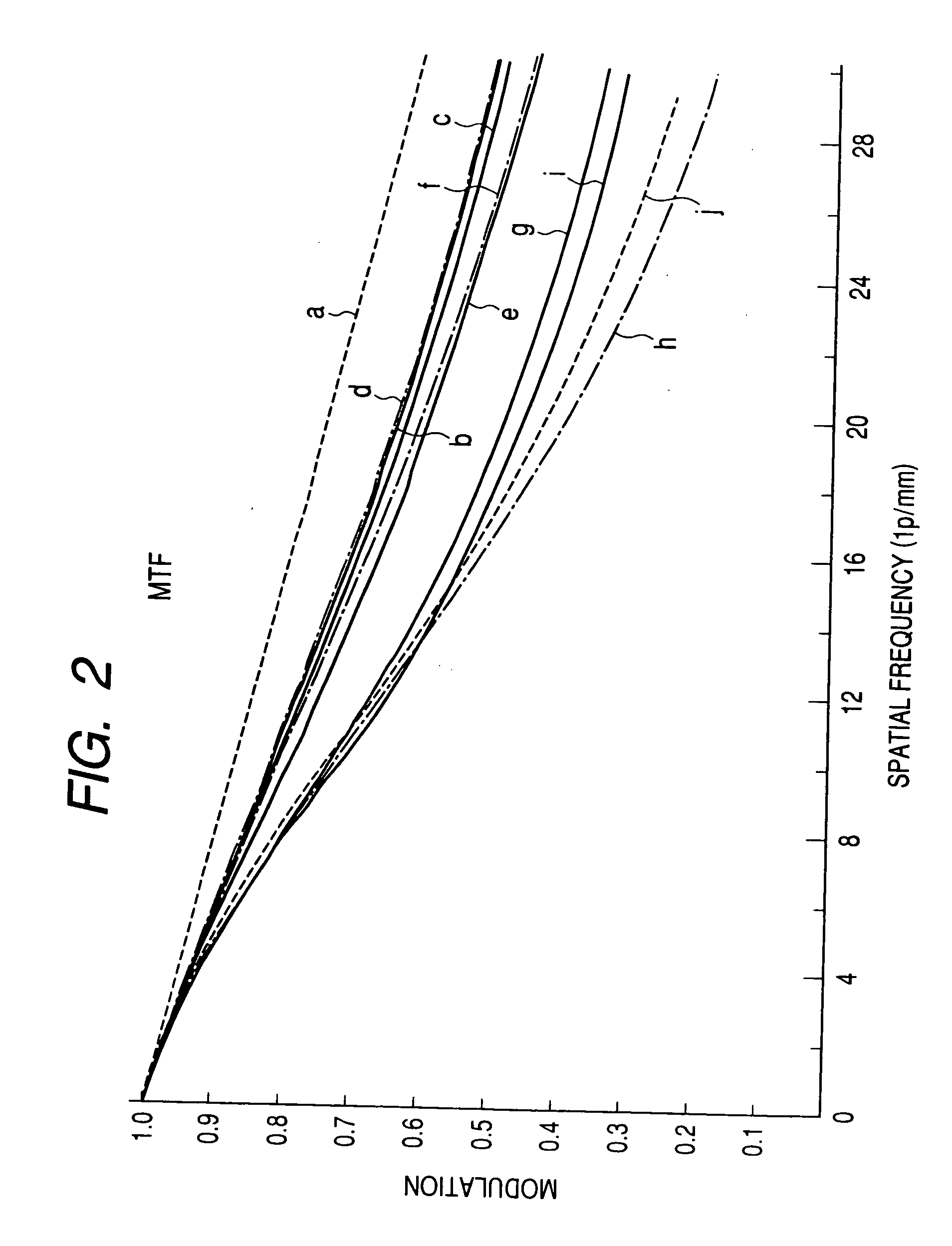Far-infrared camera lens, lens unit, and imaging apparatus
a technology of infrared camera and imaging apparatus, which is applied in the field of far-infrared camera lens, can solve the problems of insufficient resolution, difficult to solve, and high cost of far-infrared camera, and achieve the effects of long back focus, high resolution, and long back focus
- Summary
- Abstract
- Description
- Claims
- Application Information
AI Technical Summary
Benefits of technology
Problems solved by technology
Method used
Image
Examples
first embodiment
First Embodiment (FIGS. 1 and 2)
[0082]ZnS, a set of three lenses (G1, G2, G3)
[0083]f12 / f=2.34
[0084]f=18.5 mm
[0085]f12=43.38 mm
[0086]F value 1.01
[0087]Maximum diameter 18.4 mm
[0088]Flange back 9.08 mm
[0089]Distortion 0.05%
[0090]Viewing angle 30.5°
[0091]Back focus (BF) 9.7 mm
[0092]A first embodiment is an example in which a back focus is set to BF=9.7 mm and f12 / f=2.34. f12 is a composite focal distance of G1 and G2, and f is a total focal distance. The F value of a lens is f / D obtained by dividing the focal distance f by an effective diameter D.
[0093]FIG. 1 illustrates a cross section of a lens system according to the first embodiment. This is configured to include three lenses. The three lenses are set to G1, G2, and G3 from an object side. The three lenses are all formed of ZnS. A powder material of ZnS is put into a lens-shaped mold and is then molded in a high temperature and high pressure condition. A flat member corresponding to a fourth sheet is a window W of a sensor. The sen...
second embodiment
Second Embodiment (FIGS. 3 and 4)
[0186]ZnS, a set of three lenses (G4, G5, G6)
[0187]f12 / f=1.01
[0188]f=20.4 mm
[0189]f12=20.6 mm
[0190]F value 1.11
[0191]Maximum diameter 18.4 mm
[0192]Flange back 8.08 mm
[0193]Distortion 1.78%
[0194]Viewing angle 27.1°
[0195]Back focus 8.7 mm
[0196]A second embodiment is an example in which the back focus BF is set to BF=8.7 mm and f12 / f=1.01. f12 is a composite focal distance of G4 and G5, and f is a total focal distance. The F value of a lens is f / D. Since the F value is 1.11, it is a sufficiently bright lens.
[0197]FIG. 3 illustrates a cross section of a lens system according to the second embodiment. This lens system is also configured to include three lenses G4, G5, and G6 and is formed of ZnS. A flat member corresponding to a fourth sheet is a window W of a sensor. The sensor window is provided in a sensor and is formed of Ge. A shutter (not shown) is provided between the last lens G6 and the window W. A sensor surface (image surface; image formed surf...
third embodiment
Third embodiment (FIGS. 5 and 6)
[0225]ZnS, a set of three lenses (G7, G8, G9)
[0226]f12 / f=2.98
[0227]f=17.8 mm
[0228]f12=53 mm
[0229]F value 1.02
[0230]Maximum diameter 17.4 mm
[0231]Flange back 8.08 mm
[0232]distortion 4.64%
[0233]Viewing angle 30.1°
[0234]Back focus 8.7 mm
[0235]A third embodiment is an example in which the back focus BF is set to BF=8.7 mm and f12 / f=2.98. Since the F value is 1.02, it is a sufficiently bright lens.
[0236]FIG. 5 illustrates a cross section of a lens system according to the third embodiment. This lens system is also configured to include three lenses G7, G8, and G9 and is formed of ZnS. A flat member corresponding to a fourth sheet is a window W of a sensor. The sensor window is provided in a sensor and is formed of Ge. A shutter (not shown) is provided between the last lens G9 and the window W. A sensor surface (image surface; image formed surface) J is positioned behind the window W.
[0237]The first lens G7, which is an objective lens, is a biconvex lens. A ...
PUM
| Property | Measurement | Unit |
|---|---|---|
| focal distance f12 | aaaaa | aaaaa |
| wavelength range | aaaaa | aaaaa |
| wavelength | aaaaa | aaaaa |
Abstract
Description
Claims
Application Information
 Login to View More
Login to View More - R&D
- Intellectual Property
- Life Sciences
- Materials
- Tech Scout
- Unparalleled Data Quality
- Higher Quality Content
- 60% Fewer Hallucinations
Browse by: Latest US Patents, China's latest patents, Technical Efficacy Thesaurus, Application Domain, Technology Topic, Popular Technical Reports.
© 2025 PatSnap. All rights reserved.Legal|Privacy policy|Modern Slavery Act Transparency Statement|Sitemap|About US| Contact US: help@patsnap.com



